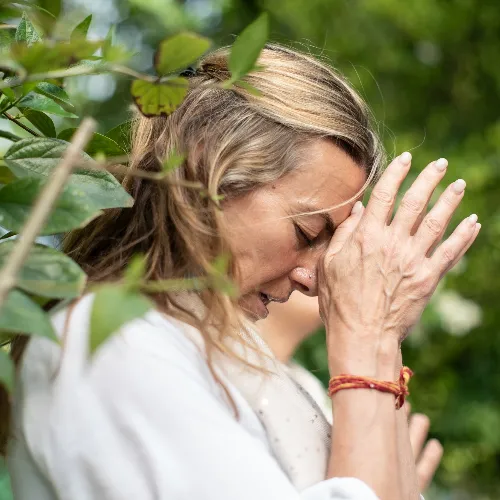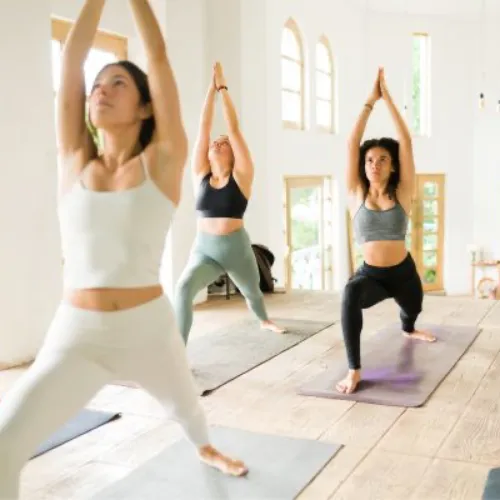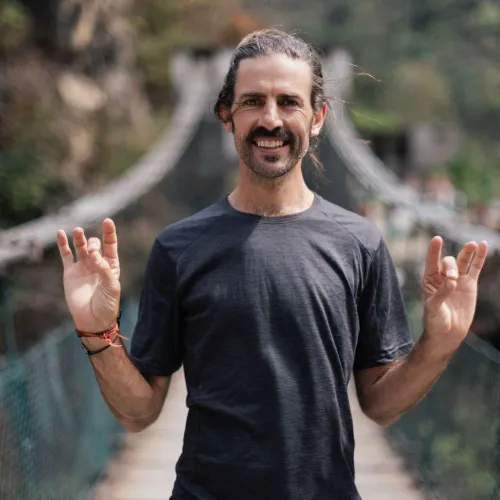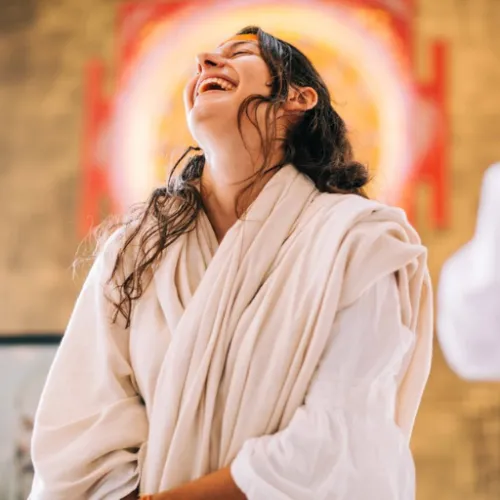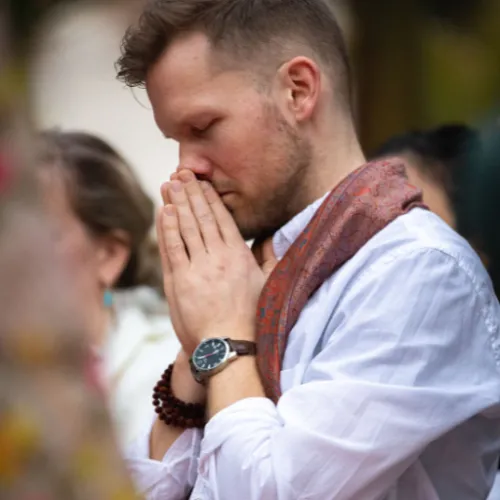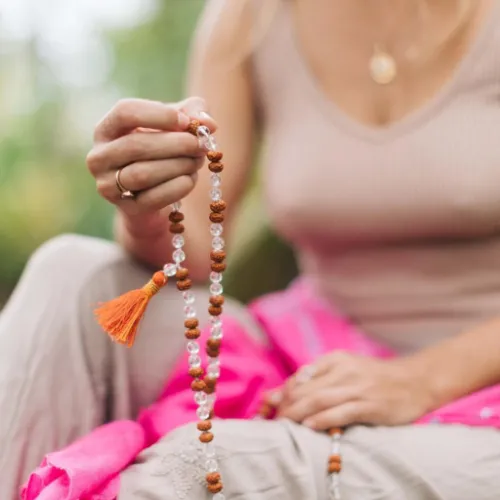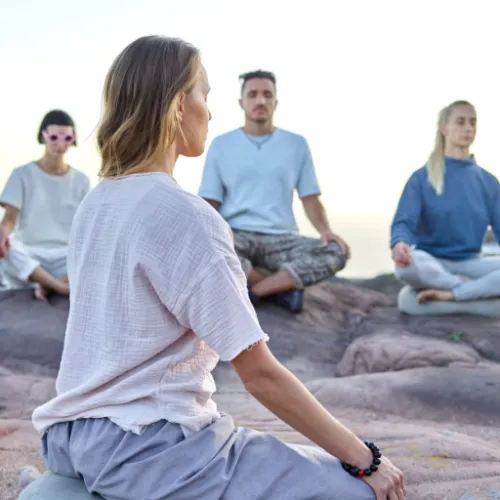


Hatha Asana refers to body positions, or postures, associated with the practice of yoga. Asana is practiced to open the body’s 72,000 nadis (energy channels) so that our energy can flow more freely. As our energy flows more freely, we feel more fully alive.
A Sattva Yoga asana practice engages and benefits more than the body’s physical system. The body’s full system of intelligence is needed to understand alignment principles of body, mind, and spirit. Sattva Yoga unifies all the body’s systems to create balance in each system individually and in the body as a whole. Yoga that focuses only on the muscular system, or any other system, in separation from the whole will create imbalance in that system and therefore in the body as a whole. Sattva Yoga creates balance and a sense of wholeness, leading to an aligned, healthy body.
Sattva Yoga Hatha Asana includes static and dynamic postures as well as vinyasa flows. Static postures are held in one position for several breaths. They are practiced in the middle or at the end of class when the body is warmed up.
Dynamic postures bring simple movements to static postures, warming the body up and making postures more accessible.
Vinyasa flows move with the breath, flowing from one posture to another. They generally become more flexibility-based as the class progresses and the body is warmed up.
There is no “advanced” in Sattva Yoga. Each practitioner will have his or her own experience of growth. While it is important to pay attention to optimal alignment, it is also important to not push further than is necessary. Practitioners are given permission to modify postures to support their unique systems and move forward on their individual paths to greater health.
The types of postures in a Sattva Yoga Hatha Asana class include the following:
Awakening Postures
Awakening postures are relaxed and fluid in nature. They warm, energize, and activate the body while encouraging awareness of the breath and the present moment. Awakening Postures invite practitioners to tune into their body, mind, and spirit in a welcoming and inspiring way.
Standing Postures
Standing postures develop strength, focus, stability, commitment, and presence. They also work to create and maintain a healthy spine, while encouraging activation of the core muscles.
Seated Postures
Seated postures develop grounding, stability, release, balance, centering, integration, and awareness of the length of the spine.
Backward Bending Postures
Backward bends help to counter stress that accumulates in the back and chest by opening, lengthening, and releasing areas of tension. They develop strength of the spine and softness of the heart, while uplifting, energizing and cultivating joy.
Twisting Postures
Twists rotate the spine and stretch the muscles of the back. This helps to restore and retain the spine’s natural range of motion. By extending the muscles to their full range with twists once or twice a day, we can help prevent misalignment of the spine. In twists, we work with the spine and the action of lengthening to create space between the vertebrae. When there is a lack of space, our spine tends to slump or get stuck and our energy levels drop. Twists give us instant energy and decompress the vertebrae in a safe, healthy way.
Inverted Postures
Inverted postures develop lightness, good circulation, clarity, relaxation, and calmness. They are detoxifying and help balance the internal organs. Inverted postures can be practiced in many phases, allowing students to gradually develop the strength and confidence to enter into various expressions of each pose in a safe and healthy way.
Arm Balancing Postures
Arm balances develop strength, balance, confidence, fearlessness, trust, focus, and good cheer. These poses can also be practiced in many phases, meeting the student where they are at.
Restorative Postures
Restorative postures cool, release, relax, and regenerate the body while also encouraging breath awareness, mindfulness, and connection. Restorative postures are relaxed and invite practitioners to surrender and let go of anything that they no longer need.
What effect can you expect to receive from a class?
The benefits include a calmer and more stable nervous system, increased flexibility of the spine and upgraded immunity. But the purpose of a Sattva Yoga Asana class is not just that. It is to use the body but to expand yourself beyond the body.
The goal is not an advanced asana pose but rather a progressive awakening to your own true nature.
FAQs
Q1. What distinguishes a Sattva Yoga Asana practice from regular Hatha yoga?
A: Sattva Yoga Asana practice isn’t just about physical postures. It emphasizes aligning body, mind, and spirit together. The idea is that all the body’s systems (muscular, energetic (nadis), nervous, etc.) are engaged, balanced, and honored—not treating them in isolation.
Q2. What kinds of postures are included in Sattva Yoga Asana classes?
A: A Sattva class includes awakening postures (gentle, fluid movements to warm up), standing postures, seated postures, backward bends, twists, inverted postures, arm balancing, and restorative postures. Some are static (held for several breaths), some dynamic, and flows (vinyasa) are used as the body warms up.
Q3. Can beginners practice Sattva Yoga Asana safely, even if they aren’t flexible or strong?
A: Yes. There is no “advanced” label. Each practitioner is encouraged to modify postures to suit their body. Alignment is emphasized, but pushing further than comfortable isn’t. The goal is steady progress and health rather than forcing poses.
Q4. What are the benefits of practicing Sattva Yoga Asana?
A: Among the benefits: calmer & more stable nervous system, increased spinal flexibility, support for overall immunity, openness in the body, release of tension, better alignment, balanced energy flow, more awareness, and ultimately expanding beyond just the physical body as awareness grows.
Q5. What should someone expect during a Sattva Yoga Asana session?
A: They’ll move through various segments: warming (awakening) postures, standing/seated, bending/twisting/inversions, arm balancing, restorative poses, with an emphasis on breath awareness and alignment. The pace may change—from gentle static holds to flows—and there will be modifications to suit individual capability.

Feeling inspired? Join us for a class on Sattva Connect. 14-day free trial Now Available.



















